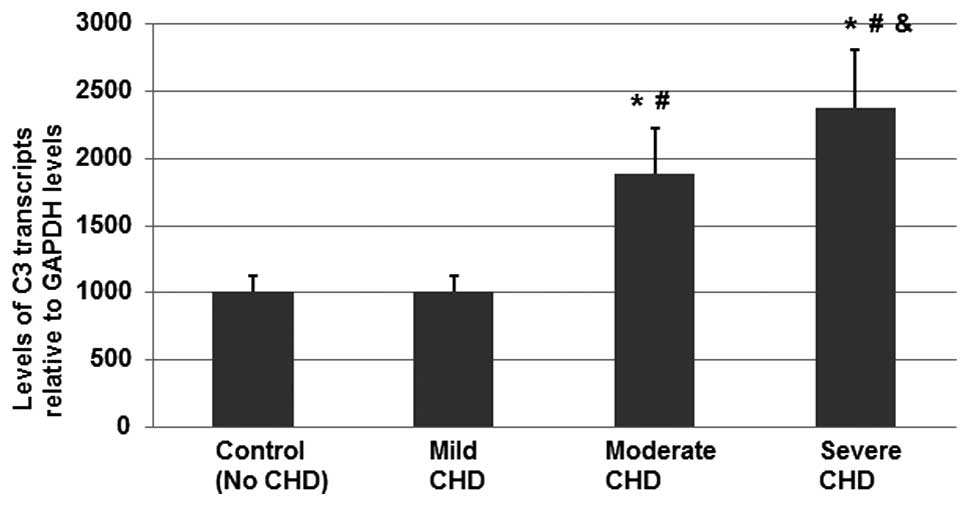Levels of acylation stimulating protein and the complement component 3 precursor are associated with the occurrence and development of coronary heart disease
- Authors:
- Published online on: October 13, 2014 https://doi.org/10.3892/etm.2014.2018
- Pages: 1861-1866
Metrics:
Total
Views: 0 (Spandidos Publications: | PMC Statistics:
)
Total PDF Downloads: 0 (Spandidos Publications: | PMC Statistics:
)
Abstract
The aim of the present study was to investigate whether acylation stimulating protein (ASP) and complement component 3 (C3) are associated with the occurrence and development of coronary heart disease (CHD). The participants of the study were divided into three groups, including the healthy control (n=42), metabolic syndrome (MS, n=56) and CHD (n=62) groups. An enzyme‑linked immunosorbent assay was used to measure the ASP concentrations, while an immunoturbidimetric assay was employed to determine the C3 concentrations. In addition, coronary angiography was performed to determine the severity of coronary artery disease in the CHD group. The CHD group was divided into three subgroups, according to the final Gensini score of coronary artery stenosis for each patient (mild, ≤20 points; moderate, 21‑40 points; severe, >40 points). Western blotting and quantitative reverse transcription‑polymerase chain reaction (RT‑PCR) were performed to analyze the protein and mRNA expression levels of C3 in the CHD subgroups and the healthy control group. The concentrations of ASP and C3 in the CHD group were found to be significantly higher compared with the control and MS groups. In addition, the levels of ASP and C3 in the mild and moderate CHD subgroups were significantly higher compared with the healthy controls or mild CHD patients. Furthermore, the protein expression levels of C3 in the moderate and severe CHD patients were found to be significantly higher compared with the healthy individuals and the mild CHD patients. The quantitative RT‑PCR results revealed that the mRNA expression levels of C3 in the moderate and severe CHD patients were significantly higher compared with the healthy control group and the mild CHD patients. Furthermore, the mean levels of C3 transcripts in the severe CHD patients were found to be higher compared with the moderate CHD subgroup (P<0.05). Therefore, ASP and C3 were found to be associated with the occurrence and development of CHD; thus, may be used as novel indexes for CHD.














